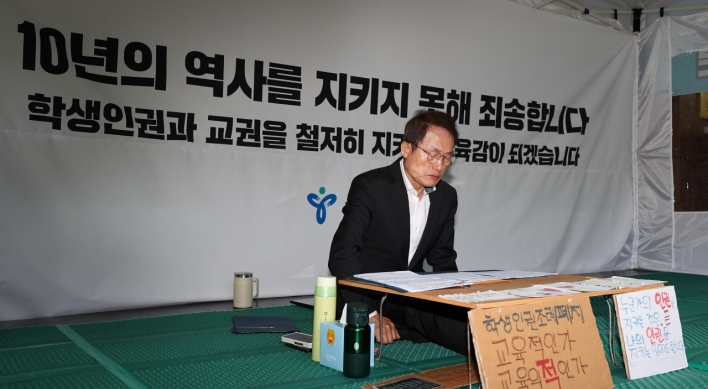
Among 13 Hyundai and Kia brand car models forced to reduce their mileage by one to two miles per gallon on average, the largest adjustment was six miles per gallon for the Soul.
While the Soul’s fuel economy in the United States was lowered from 27 miles per gallon to 21, or from 11.5 kilometers per liter to 8.9, its official rating in Korea is far higher, ranging from 15 to 18 kilometers per liter.
“I understand there must be some differences in the road conditions in the U.S. and Korea. But I just want more explanation about the big discrepancy in the estimates,” Lee said.
While industry watchers were cautious about directly comparing the mileage estimates in Korea and the U.S., they agreed the Korean system still has much room to improve.
“Countries adopt different gas mileage testing procedures depending on their own situations. Among them, the official ratings in the U.S. show the highest accuracy rate which reflects 90-95 percent accuracy in the actual amount of gas used in vehicles,” said Kim Pil-soo, professor of automotive studies at Daelim University.
The U.S. figure compares to 85-90 percent accuracy in Europe, 80-85 percent in Korea and 70 percent in Japan.
“The nation’s new mileage rating system, adopted this year, has increased the accuracy by 15-20 percent. But the government still needs to toughen monitoring programs including raising the number of vehicles they inspect for management after launch,” Kim said.
The Korea Energy Management Corporation, which oversees fuel economy of vehicles marketed in Korea, offers two options to be used for carmakers to provide their mileage estimates.
All Korean carmakers opt to report results of their own mileage tests to the state-run energy management agency, while most import brands that have no testing facilities here receive tests by authorized testing organizations.
The U.S. government also allows carmakers to conduct their own testing and then report the results to the authorities. But a big difference is their strict management of the stated ratings by companies.
The latest mileage fiasco for Hyundai and Kia cars in the U.S. and Canada was triggered by an average 3 percent difference in the stated and actual mileage estimates. But in Korea, the allowable margin of error is 5 percent.
Largely due to tight budget constraints, a sampling test is conducted on less than 10 percent of the vehicles subject to post launch inspection.
Unlike the U.S. Environmental Protection Agency that receives consumer complaints to investigate suspected cases, there is no way to make such a complaint in Korea.
As the result, no adjustment has been made in the stated mileage of vehicles sold in Korea for decades.
“We provide mileage estimates following the rules here. We are concerned about any negative impact in our brand image due to some discrepancies in mileage figures across regions,” said an official of an import brand, declining to be identified.
Civic groups also urged a more transparent mileage testing system.
“In a recent survey, 69.4 percent of Korean drivers said they sense some discrepancies between the stated and actual fuel economy of their vehicles,” said an official of Citizens’ Coalition for Economic Justice.
“The government should increase the related budget and have an independent organization that is free from pressure of auto companies.”
Early this month, Hyundai admitted it had overstated the mileage of some 1 million Hyundai and Kia brand cars sold in the U.S. and Canada over the past three years.
Hyundai officials cited “procedural errors,” saying the mileage tests conducted at the company’s Korean tech center have failed to sufficiently take into consideration the real-world conditions in the U.S.
But they denied there were similar errors in the cars sold in Korea.
By Lee Ji-yoon (jylee@heraldcorp.com)
-
Articles by Korea Herald




![[KH Explains] No more 'Michael' at Kakao Games](http://res.heraldm.com/phpwas/restmb_idxmake.php?idx=644&simg=/content/image/2024/04/28/20240428050183_0.jpg&u=20240428180321)













![[Herald Interview] Mistakes turn into blessings in street performance, director says](http://res.heraldm.com/phpwas/restmb_idxmake.php?idx=652&simg=/content/image/2024/04/28/20240428050150_0.jpg&u=20240428174656)
